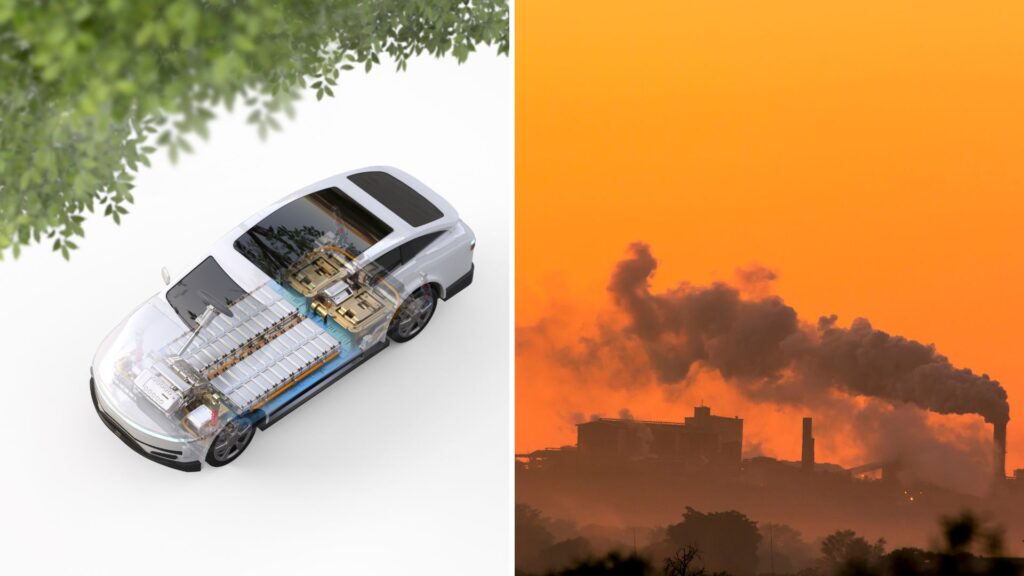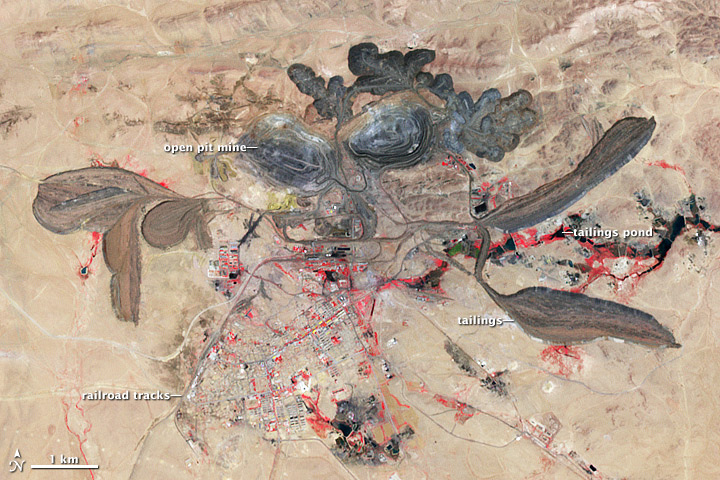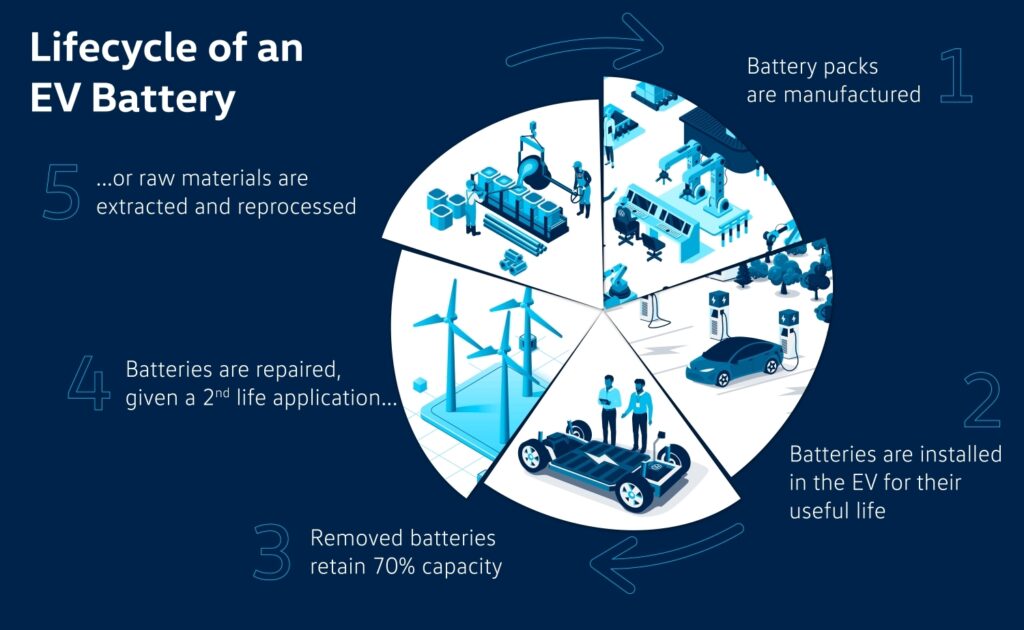Forget “range anxiety” – the next big worry for EV enthusiasts might be a different kind of scarcity. Electric vehicles are projected to surge from 40 million on the road today to a whopping 230 million by 2030. But to get there, we’d need a literally “earth shattering” 700% increase in the production of rare earth metals like neodymium. Here’s the catch: these critical elements are already under strain. Mining them is often devastating to the environment, and just a handful of countries hold a 70% global chokehold on their refining. So, the question becomes: can the EV boom avoid getting strangled by its own reliance on rare earth metals?

Quick Background on Rare Earth Metals (REMs)
While not truly rare in the Earth’s crust, REMs are tricky for us to extract on the surface. They often occur in complex mixtures, making separation and extraction both tough on labor and the environment. Yet these 17 elements have unique properties that make them vital for modern technology:
- Unmatched Magnetic Strength: Neodymium (NdFeB) magnets are a cornerstone of EV technology. They pack a much higher magnetic punch than traditional magnets, allowing for the creation of lighter, more efficient electric motors. This translates to better range, faster acceleration, and overall improved performance.
- High Curie Temperature: This refers to the temperature at which a magnet loses its magnetism. REMs boast impressive Curie temperatures, which is crucial for the high heat of electric motors. They help EVs stay safe and reliable, even as they get pushed to their limits on the road.
- Workhorses of Electric Motion: Dysprosium (Dy) plays a vital role in permanent magnet synchronous motors (PMSMs) commonly used in EVs. This REM enhances the motor’s ability to convert electrical energy into mechanical force, boosting power output and efficiency. Also, some REMs like Lanthanum (La) are being explored for next-generation solid-state batteries.
With these unique properties, REMs enable the creation of powerful, compact, and efficient electric motors and batteries – the beating heart of any EV.
The Big Problem(s)
The seemingly unstoppable EV boom is riding on the back of a fragile and unsustainable supply chain for rare earth metals. Right now, we’re trading one dependency (fossil fuels) for another, less visible but still problematic dependency on REMs. The bright promise of green technology could be severely dimmed if we don’t fix this supply chain. Here’s the breakdown of the major risks:
Extraction is Dirty and Harmful
Current REM mining methods are notoriously harmful to the environment. Extraction sites are often riddled with heavy metals, radioactive waste, and acidic water runoff. This not only disrupts local ecosystems, but also poses health risks to nearby communities.
The Bayan Obo mine in China, a major source of REMs, is a stark example of this pollution legacy. For decades, its toxic wastewater has been dumped into an artificial lake, poisoning surrounding farmland and groundwater. As a result, nearby villagers suffer disproportionate rates of cancer and respiratory diseases. Studies have found alarming levels of thorium, a radioactive element, in the hair samples of villagers.
The Bayan Obo mine isn’t an isolated case. While the scale and severity of pollution can vary, most current REM mining leaves a damaging environmental footprint.

Geopolitics Can Choke Supply
Over 70% of REM mining occurs in a handful of countries, with China holding the dominant position. But their control goes beyond mining – they also refine an even greater percentage of the global REM supply. This concentration creates a potential chokepoint for the global industry. Disruptions, whether from a trade war or earthquake, could clog up the EV supply chain practically overnight.
For example, China has previously used its control of REM exports as a geopolitical pressure tactic. In 2010, during a territorial dispute with Japan, China temporarily halted REM shipments, causing prices to spike. A repeat of this scenario, as the global hunger for EV materials grows, could spark a resource scramble with unpredictable consequences.
But this isn’t about any single nation. Having a diversified, resilient supply chain is essential because EVs can’t be built on a foundation of geopolitical fragility. Countries like Australia, Vietnam, and even the United States also have significant REM deposits. While it will take time, a focus on ethical mining in these regions would lessen the industry’s overreliance on a single source.
Progress is Expensive
The International Energy Agency warns that the cost of key REMs like neodymium and dysprosium could spike 70% by 2040. This isn’t just about consumers feeling the pinch. Escalating REM prices could derail the EV revolution from an innovation side too.
Currently, the price of neodymium oxide hovers around $100 per kg, but projections suggest it could reach $170 per kg or higher by 2040. This forces a trade-off: either cut corners elsewhere in EV design (undermining performance)… or slow down the pace of research into battery breakthroughs and new motor technology.
Recycling is Still Nascent
While recycling REMs is promising, the hard truth is that the technology is not yet ready to scale. Estimates suggest current methods recover less than 1% of REMs from e-waste or retired EV components. Also, the infrastructure for large-scale REM recycling is underdeveloped. So while recycling is a crucial piece of the long-term solution, it’s not a magical fix for the challenges we face right now.
It’s NOT Hopeless: Emerging Solutions
The REM problem is serious, but it’s far from hopeless. In fact, it’s sparking a wave of innovation and strategic shifts:
Stepping Up Recycling
Currently, only an estimated 1% of REMs are successfully recycled. Breakthroughs in hydrometallurgy (using liquid solutions for extraction) and bioleaching (using microorganisms to break down ore) could transform e-waste and retired EV components into a viable REM reservoir.
Companies like Redwood Materials are already pioneering closed-loop systems for EV battery recycling. The potential gains here are impressive. Studies suggest that with improved technology, we could meet up to 35% of REM demand through recycling alone.

Alternative Designs
Motor manufacturers are experimenting with reluctance motors or induction motors that significantly reduce (or entirely eliminate) the need for rare earth magnets. Tesla’s Model 3, for example, uses a combination of motor types. While some performance drawbacks exist, ongoing research may make this a widespread solution in the future.
Responsible Sourcing
Projects like the Mountain Pass mine in California demonstrate a potential to reactivate domestic REM sources. If ethically mined and processed, sites like this could lessen dependence on overseas suppliers. Governments are also funding research into extracting REMs from unconventional sources like coal waste.
Seabed Mining?
Vast REM deposits are suspected on the ocean floor, but seabed mining is highly controversial. Companies like The Metals Company argue it can be done responsibly, critics point to the immense potential for disrupting fragile deep-sea ecosystems – an area we barely understand. The technology is unproven at scale, and regulations are still evolving.
Key Takeaway: This isn’t about one “silver bullet” solution. We need rapid advances in recycling, materials substitution, responsible mining, and perhaps a critical look at where seabed mining can fit into the picture, if at all. The success of the EV boom depends on it.
Our Duty as an Informed Public
The sleek lines and silent motors of EVs symbolize a future free from fossil fuel dependence. But hidden beneath that gleaming exterior lies a harsh reality: the dirty, geopolitically fraught world of rare earth metal mining. The REM problem shows us that true sustainability means looking beyond marketing promises and understanding the full impact of these technologies.
We must demand transparency from companies about their supply chains. We must push for policies that support research, ethical sourcing, and domestic innovation. And we must have informed discussions about the issues and potential solutions surrounding EVs. Only then can the EV revolution fulfill its promise of clean transportation, without leaving a trail of new environmental and geopolitical problems in its wake.

